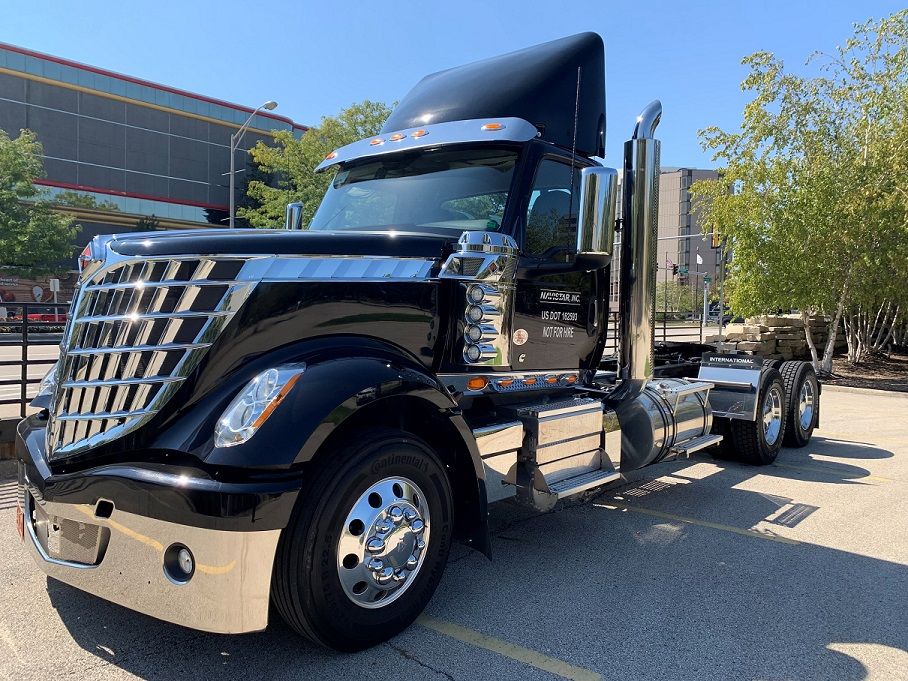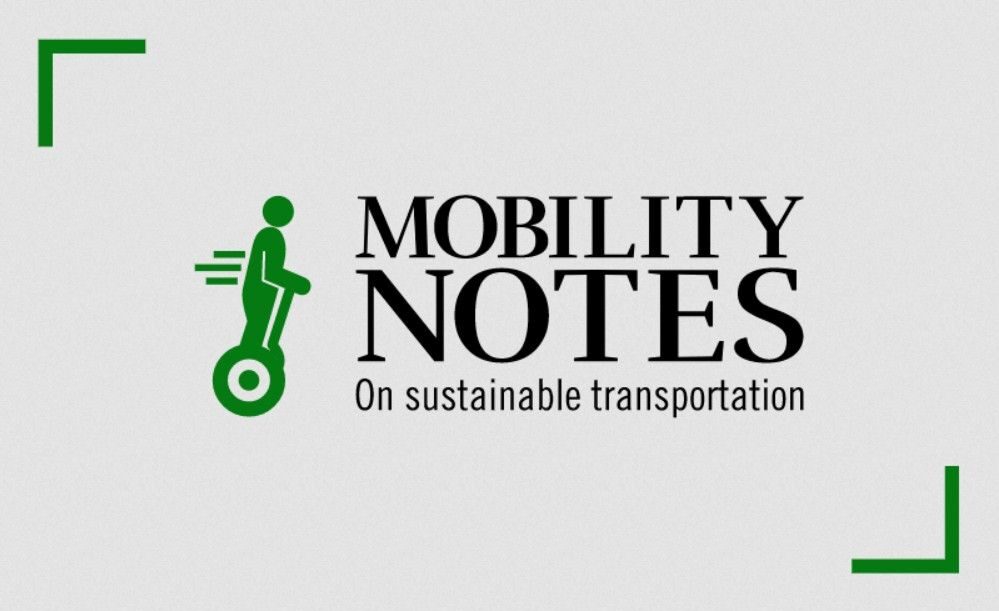Notes from COMVECTM 2021 "live" @ Chicago
SAE COMVECTM 2021
SAE’s COMVECTM is the only forum dedicated to discuss latest and future trends pertinent to commercial vehicles. As such it is delivers a focused discussion on the heavy-duty transportation and off-road sector.
The conference was held in a hybrid format – with talks and panel discussions live and also broadcast for online viewing. App-based Q&A enabled the audience to ask questions during the talks. An exhibition hall showed off hardware and software solutions for the industry, and also some cool student projects. Various coffee and networking breaks offered the now-prized opportunity to see colleagues in person (at least half their faces, masks still in place). And outside was parked this Class 8 truck, boasting the latest technologies for performance, reduced fuel consumption and emissions.
The conference goes by Chatham House rules – comments are not quoted outside – and we will abide by that requirement. Hence this is not a detailed summary but some impressions of the broader themes discussed.

A Navistar Diesel Class 8 semi parked outside the conference venue.
Some key takeaways
Meeting ultra-low NOx standards is no walk in the park
Alternative fuels (to diesel) and advanced ICE technologies
Pure Battery Electrics: A key question is whether pure battery electrics can be a viable option. The barriers are highest for long-haul trucks.
- Range : Commercial offerings today are limited to 250 – 300 mi, which can be insufficient for long-haul routes today.
- Fast-fueling : A diesel is fueled at 100 – 250 mi / min, while an electric delivers ~ 24 mi / min at 3 MW or 8 mi / min at 1 MW. Wireless charging is being advanced.
- Route flexibility
- Reliability
- Acquisition cost: BEV trucks can cost 2 – 4X that of diesels today.
- Charging cost: While not identified as a barrier per se, it was highlighted that charging cost could be anywhere from < 10 c/kWh to > 40 c/kWh. Electricity need for all transportation (light, medium and heavy-duty vehicles) will increase by 1,400 TWh by 2050. That is a 23% increase in electricity consumption vs. today.
Hydrogen fuel-cell trucks: The key challenge here is the cost of producing green H2 at scale. The DOE target is “1-1-1”: $1 for 1 kg in 1 decade. That is very challenging, considering current costs are around 5-6X that target. Nevertheless, fuel cell vehicles are being introduced and early models could run on H2 produced via reforming of natural gas.
Hydrogen ICE: Burning H2 in an ICE might look inefficient (compared to a fuel cell) but proponents point to the benefit in terms of using much of the existing hardware for diesel engines. The key change required will be designing and optimizing the injection systems. NOx is still an issue but at much lower concentrations compared to a diesel and along with SCR might be even lower than ambient levels. Will regulators treat H2-ICE as zero-emitting ? Unlikely.
Renewable and synthetic fuels: This includes the replacement of diesel fuel with renewables such as ethanol and methanol, and synthetic drop-in replacement e-fuels, for reduced wells-to-wheel CO2 emissions. The current regulatory approach is to decarbonize fuels and vehicle tailpipes separately, which is perhaps not the best in terms of motivating the uptake of these fuels.
Advanced ICE technologies: Opposed piston engines are very promising. Demonstrations show both for reduced CO2 as well as ultra-low NOx with conventional after-treatment layouts. Dynamic cylinder deactivation and mechanically driven turbochargers are also delivering reduced CO2 which providing elevated exhaust temperatures for low NOx.
Expect massive growth in agricultural equipment and related technologies:
- The world population is expected to grow by 50% (to ~ 10 billion) by 2050, and food production will need to grow by 70% by the same timeframe, given that we are consuming more with increased affluence. The implications –
- For increased productivity, full autonomy of agricultural machinery will be needed and realized sooner than we think.
- Data-driven work will gain importance as we shift from farm / field to “plant-level” management. Examples include planting seeds according to the local topology, soil conditions and weather, and spraying chemicals precisely on weeds.
- Lots of opportunity for 5G connectivity. However, it is imperative that all regions get access to technology improvements and that disadvantaged communities and farmers in remote places are not left behind.
- For farmers, a tractor is their office-on-wheels : technology will be added to increase cabin comfort.
Data overload
The key trends in transportation are electrification, autonomy, connectivity and new transportation business models. The need for data acquisition on vehicles is expected to grow exponentially, expected to reach 40 TBytes per day per vehicle by 2030 ! Hopefully not all of the data will be stored perpetually, still that’s a lot of servers storing data – and raises the question how much of the CO2 reduction due to efficiency gains is lost to keeping the servers up and running. Automation is key, and will require advances in all aspects – mapping, sensors, decision making, machine vision, connectivity and AI.
Attend COMVECTM next year !
Here’s a link to the conference page. Mark your calendars for Sept 20 – 22 next year, to be held at Indianapolis.Check out the monthly newsletter covering the latest on sustainable transportation technologies and regulations. Sign up if you like such content.
Like it ? Share it !
Other recent posts
Conference Summary – SAE WCX 2025
![]()
A summary of the “SAE WCX 2025” conference held in Detroit.
IRENA Renewable Energy Capacity Statistics 2025
![]()
According to the latest report from IRENA, 2024 saw the largest increase in renewable capacity, accounting for 92.5% of overall power additions.
CO2 Emissions Performance of Heavy-Duty Vehicles in Europe – 2022 Results
![]()
The European Commission has published the official 2022 CO2 emission results for heavy-duty vehicles. Many OEMs are ahead of the targets and have gained credits, while others have their work cut out as we approach the 2025 target.

